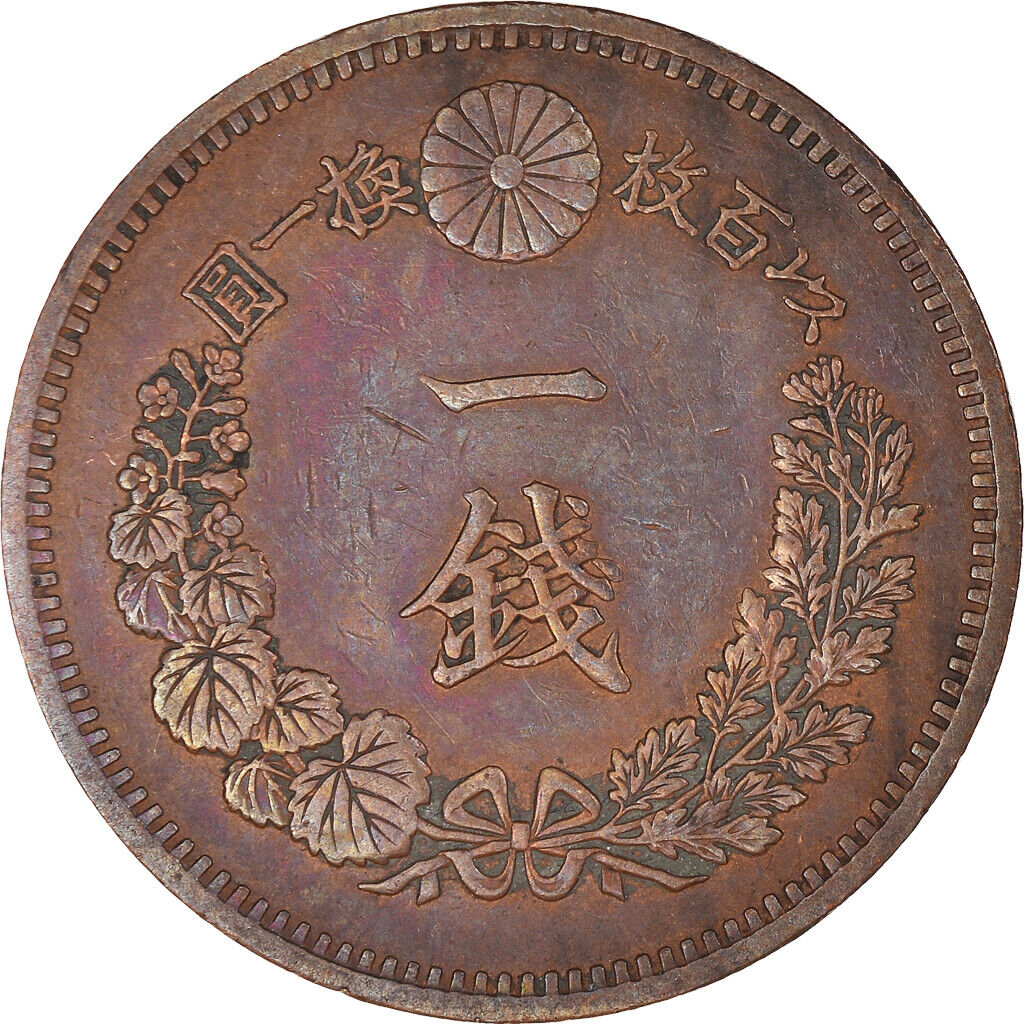Edinburgh Coins
Sen, 1884
Sen, 1884
Regular price
£42.99 GBP
Regular price
Sale price
£42.99 GBP
Unit price
per
Tax included.
Couldn't load pickup availability
The Sen coin from Japan represents a significant era in the country's monetary history, predating the adoption of the Yen as the official currency. The Sen was a unit of currency in Japan during the feudal era and early modern period, typically made of copper or other base metals.
The design of the Sen coin varied depending on the issuing authority, which could include feudal lords (daimyo), local authorities, or the central government (shogunate). These coins often featured intricate designs and symbols reflecting the issuing authority's identity, such as family crests, feudal domain names, or regional motifs.
The obverse side of the Sen coin typically displayed the issuing authority's emblem or other decorative elements, while the reverse side might feature inscriptions denoting the denomination in Japanese characters or symbols representing traditional Japanese culture.
Sen coins were used in daily transactions and trade throughout Japan during this period, serving as a vital medium of exchange in the feudal economy. They circulated alongside other forms of currency, including gold, silver, and rice.
Overall, the Sen coin holds historical significance as a representation of Japan's feudal and early modern periods, offering insights into the country's economic, social, and political dynamics during that time. As such, it remains a valuable collectible for numismatists and a tangible link to Japan's rich cultural heritage.
View full details
The design of the Sen coin varied depending on the issuing authority, which could include feudal lords (daimyo), local authorities, or the central government (shogunate). These coins often featured intricate designs and symbols reflecting the issuing authority's identity, such as family crests, feudal domain names, or regional motifs.
The obverse side of the Sen coin typically displayed the issuing authority's emblem or other decorative elements, while the reverse side might feature inscriptions denoting the denomination in Japanese characters or symbols representing traditional Japanese culture.
Sen coins were used in daily transactions and trade throughout Japan during this period, serving as a vital medium of exchange in the feudal economy. They circulated alongside other forms of currency, including gold, silver, and rice.
Overall, the Sen coin holds historical significance as a representation of Japan's feudal and early modern periods, offering insights into the country's economic, social, and political dynamics during that time. As such, it remains a valuable collectible for numismatists and a tangible link to Japan's rich cultural heritage.




